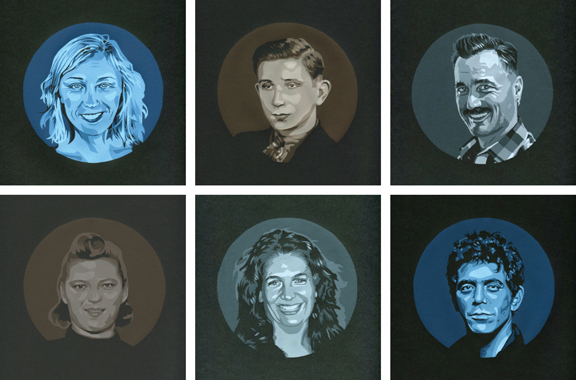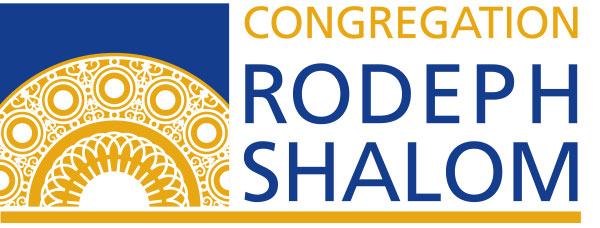 A continuing theme running through the book of Exodus is the coming and going of both Moses and God. After the lengthy drama of the Exodus, Moses disappears up the mountain and reappears to see the chaos of the episode of The Golden Calf. He is God’s corporeal messenger to Pharoah but absent from the discussion in Parashat T’tzaveh of the priestly responsibilities. God, too, is near when displaying signs and wonders in Egypt and splitting the sea, enabling the Israelites to pass to freedom, and also remote to the Israelites while Moses is up on the mountain receiving the law. Indeed, the whole discussion of the building of the Mishkan (tabernacle) through a great proportion of the book of Exodus revolves around the central question of how God will dwell among the people, so the Israelites understand that something that cannot be seen or touched can feel close.
A continuing theme running through the book of Exodus is the coming and going of both Moses and God. After the lengthy drama of the Exodus, Moses disappears up the mountain and reappears to see the chaos of the episode of The Golden Calf. He is God’s corporeal messenger to Pharoah but absent from the discussion in Parashat T’tzaveh of the priestly responsibilities. God, too, is near when displaying signs and wonders in Egypt and splitting the sea, enabling the Israelites to pass to freedom, and also remote to the Israelites while Moses is up on the mountain receiving the law. Indeed, the whole discussion of the building of the Mishkan (tabernacle) through a great proportion of the book of Exodus revolves around the central question of how God will dwell among the people, so the Israelites understand that something that cannot be seen or touched can feel close.
What does it mean to be present? What does it mean to have presence? Perhaps we best consider our most abstract questions through the abstraction of art.
The Philadelphia Museum of Jewish Art, which is housed at Congregation Rodeph Shalom in Philadelphia, has, since 1975, dedicated itself to exhibiting contemporary Jewish art that illuminates the Jewish experience and explores Judaism’s fundamental questions. The current exhibit in the Museum is “Jim Winters: Presence.” The show is a series of portraits, displayed randomly but grouped by category that explores the power of influence, mourning, and memory.
The first category of portraits, those displayed in grey on black, features people from Winters’ life. In the wake of loss, of both his father and his best friend, Winters collected the portraits to explore the connections we make and hold in life. We are influenced every day by those who are a part of our everyday lives. But have we looked closely at those we love and could we describe their features?
The second category of portraits, those displayed in brown on black, features photographs displayed at Auschwitz that were confiscated from prisoners upon their arrival at the camp. The portraits show faces at happier times, but we the viewers know what came after the photo was taken. How do we remember those who came before us, whether we knew them or not, once they are gone?
The third category of portraits, those displayed in blue on black, feature Jewish celebrities whom Winters feels have influenced him in some way. Sometimes our influences, the pictures running through our minds, are not those with whom we interact. They are a part of our lives, but in the most remote way possible. How many images collide in our minds as we form our opinions and tell our stories?
Together, the collection of portraits asks: What does it mean to be truly present in other people’s lives and to have your presence felt in theirs?
The elusive nature of presence in Exodus is established early in the book. In the episode of The Burning Bush, as Moses begins to wrap his head around the idea of serving as God’s messenger to Pharoah and freeing the slaves in Egypt, Moses asks God, “When I come to the Israelites and say to them, ‘The God of your fathers has sent me to you,’ and they ask me, ‘What is His name?’ what shall I say to them?” (Exodus 3:13) Moses is asking for a name, but also for a description, for an image. God says only, “Ehyeh Asher Ehyeh.” (Exodus 3:14)
God’s answer defies simple translation, and some attempts to translate it include “I Am That I Am,” “I Am Who I Am,” and “I Will Be What I Will Be.” However “Ehyeh Asher Ehyeh” is translated, it implies a lack of tangible presence that God’s being is past, present, and future without being only one of those things at any one time. The sound of the phrase “Ehyeh Asher Ehyeh” evokes the rush of wind or breath, a physical presence we feel but cannot see, that we sense but don’t quite understand.
The psychologist Erich Fromm argued that being is a process, that God is in the process of becoming, and we, made in God’s image, are always in process as well. This theme plays out again and again over the course of the book of Exodus.
We learn that God realizes that isolated experiences of signs and wonders are not enough to instill lasting faith in the Israelites. While the plagues and the splitting of the sea inspired awe and joyful thanksgiving, without a sense of God physically accompanying the Israelites on their journey, the Israelites resort to idolatry rather quickly. The Mishkan is God’s gesture to the people to express what God has learned: I will be with you in the way that you need me to be. I will be present.
We also learn that Moses is a complicated figure: brave and fearful, patient and frustrated, certain and unsure. In his coming and going, in his elusive presence, we see his past, those who have influenced him, and the goal that drives him. We learn as much about him at the times he is absent as the times he is present. We learn from his evolution over the course of the book of Exodus and the rest of Torah, and we understand his motivation to see his task to completion.
Torah teaches just as God is not only one thing at one time, we God’s people should be aware of all of the influence, mourning, and memory that make us who we are, that drive the process of becoming present.
How does an artist teach about a person’s presence? In the spirit of the study of Torah, art pushes us to ask questions. Both the process of becoming and the concrete and elusive nature of presence are evident in Jim Winters’ exhibit in many ways, and as we uncover them, we examine our own presence more closely. For example, the process of creating each portrait, made in exactly the same way in the same style, requires multiple layers of printing to develop each one. Each of us has accumulated layers in the process of becoming, the layers that are our influences, our mourning, and our memory. What are your layers? Which have you recently acquired, and which have you recently examined or stripped away?
Presence – past, present, future and not just only one of those at a time, is represented in the interspersing of the portraits in a seemingly random display. How aware is each of us of our past, present, and future, of who has come before so we could be, of who is influencing us now to become what we will be, of who holds us up to be who we are now?
Presence is elusive. Presence is also concrete in the faces of those around us. The book of Exodus and the story of this art exhibit teach that Presence is a process.
Erin Frankel is the cantor at Congregation Rodeph Shalom in Philadelphia. She is a 2003 graduate of HUC-JIR’s Debbie Friedman School of Sacred Music and a member of the American Conference of Cantors.
